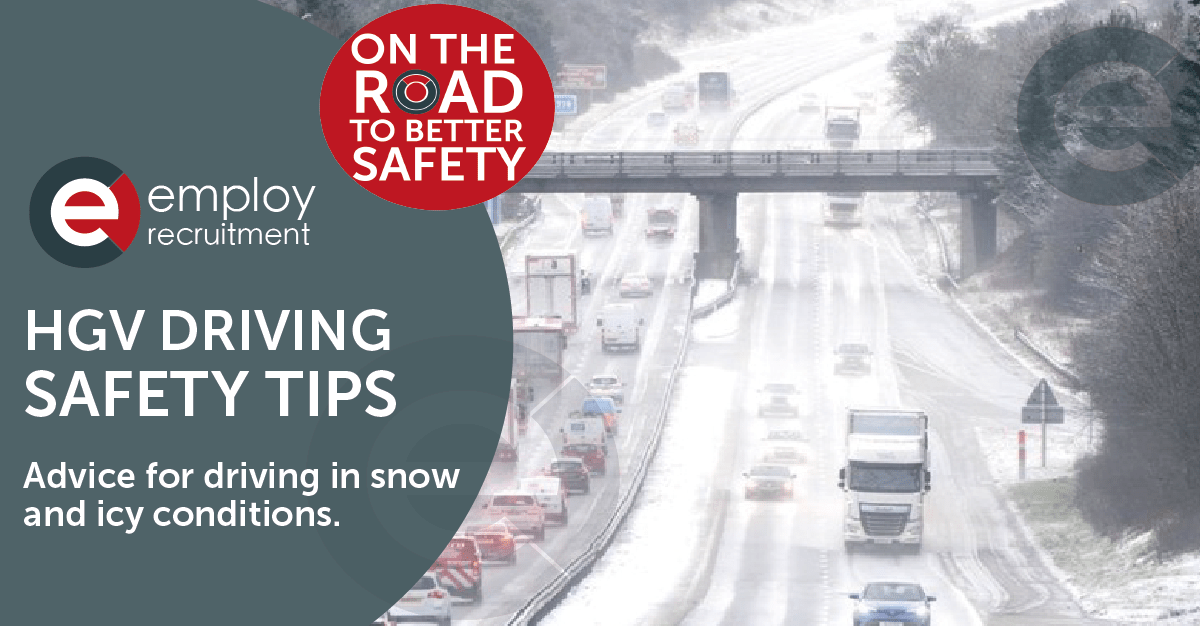As we head towards the winter, we see a change in the weather with temperatures dropping to minus and the news of snow on the way, we want to make sure all our drivers are prepared for driving in these conditions and are safe to do so. Logistics UK have provided some useful safety tips for snow and ice, please see below, and read carefully:
Here’s some advice for driving in snow and icy conditions.
- Allow more time for your journey.
- Obtain weather information before you set off and keep up to date with changing conditions and closed routes via the radio or by regularly calling into base.
- In snowy or freezing conditions, carry in the cab: a shovel; a couple of strong sacks (to put under the drive wheels if the vehicle becomes stuck); warm clothes and a blanket; a torch, food and a warm drink in a flask; a road atlas; a mobile phone and charger; and sunglasses (the glare from snow can be dazzling).
- Ensure the whole of your vehicle (especially your windscreen and mirrors) is cleared of ice and snow before attempting to move off.
- Lower your speed and keep a good distance from other vehicles – allow ten times the normal stopping distances on icy roads.
- Allow for the fact other drivers may get into difficulties.
- All braking must be gentle and over much longer distances, especially when driving articulated vehicles or those with a trailer attached.
- Avoid any sudden braking, steering or acceleration.
- Falling snow can reduce visibility dramatically, use dipped headlights and reduce your speed.
- Road markings and traffic signs can be obscured by snow. Take extra care at junctions.
- In prolonged periods of snow, the fixing of snow chains or snow socks to driven wheels can prove to be of value.
- Don’t attempt to overtake a snow plough or vehicle spreading salt, unless you are sure the road is clear and the conditions allow it to be done safely.
- When driving at night, be alert for a drop in temperature. If the steering feels light, you may be driving on ice, so ease your speed as soon as it is safe to do so.
- If your vehicle becomes stuck in deep snow, engage the diff-lock (if one is fitted) to regain forward traction – but remember to switch it off as soon as the vehicle is moving and before attempting a turn. Alternatively, use the highest gear you can to improve traction. Then try alternating between reverse and the forward gear until forward motion is possible. Avoid continual revving in a low gear, which could lead to the drive wheel digging a deeper rut.
- When operating independent retarders, take care when going downhill in snow. The retarders could cause the rear wheels to lock, although some retarders are managed by ABS to help avoid this problem.
- During this period of cold weather, we ask all drivers take ‘night out gear’ on shift with them as an extra precaution, as in the event that it does snow whilst you are out on shift to the point where it is unsafe to drive, you have some provision.
Any questions on the above, please get in touch with Kathryn on 01335 346800 or kathryn.martin@eruk.co.uk


